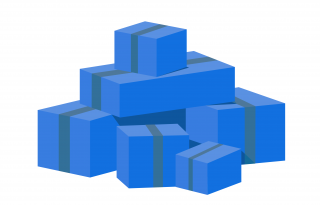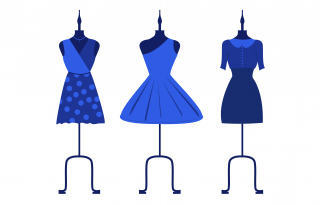Glossary
A basis weight, in pounds, of a ream (500 sheets) of paper cut to the "basic" size. A common example is 20# copy paper. The "basic size" of that sheet is 17" x 22" and 500 sheets weighs 20 lbs.
The bindery department within a printing company responsible for collating, folding, trimming, and binding various printing projects.
A press blanket is a rubber-coated pad mounted on a cylinder of an offset press. It receives the inked image from the plate and transfers it to the surface to be printed.
Bleed refers to an image that extends to the very edge of the page - it "bleeds" off of the page.
To have an image go to the edge of the page, a bleed must be set up in the initial document. It creates extra space on the outside of your document that will be trimmed off when the job is complete.
The standard bleed size is 1/8". Many graphic design programs such as InDesign make setting this up simple (File >> Document Setup >> Bleed). Other software packages may not have a built in setting and in that case just increase the overall document size by 1/8" on each side.
Ex. standard 8.5" x 11" sheet becomes a 8.75" x 11.25" document.
As opposed to a normal folio, a blind folio is a page number that is not printed on the page. For example, in a book the first few pages in a book often do not have page numbers. The page numbering might start with 1 on the 6th physical page of the book. Those first 5 physical pages without a page number are blind folios.
A blind image is a debossed, embossed, or stamped picture, but not printed with ink or foil.
Blocking, or bricking, is when printed sheets stick together. With offset presses this happens if there is not enough anti-offset powder on the sheet. With digital printing this can happen if the pages are not cooled adequately before stacking.
Board paper, or board stock, is a general term for paper over 110# index, 80# cover or 200 gsm. It is commonly used for pocket folders, packaging, displays, and hardcover books. It is also sometimes called paperboard.
Bond paper is a category of paper commonly used for writing, printing, and photocopying. It is an uncoated paper that absorbs most kinds of ink. It is also called business paper, communication paper, correspondence paper and writing paper.
A book block is a collection of pages, usually in the form of folded signatures, that are not yet bound with the cover.
Book paper is a category of paper suitable for books, magazines, catalogs, advertising and general printing needs. Book paper is divided into uncoated paper (also called offset paper), coated paper (also called art paper, enamel paper, gloss paper and slick paper), and text paper.
Bounce is a repeating registration problem in the printing stage of production. The image appears to be "bouncing" around on the sheet and not printing in the same place on every page. It is possible that only one specific color has a bounce problem.
Building a color is the process of overlapping two or more screen tints to create a new color. Almost all colors in a traditional printing process are built using CMYK, a combination of Cyan, Magenta, Yellow and Black.
Butt registration is when ink colors meet precisely without overlapping. Most printing allows colors to overlap, also known as trapping, very slightly to not show tiny imperfections of misaligned registration that would be visible with butt registration.
A buyout is a service that is subcontracted to an outside vendory. It can also be called a farm out. This is often done for a small specialty part of a job that we may not have the equiptment to do in house.
Recent Blog Posts
Print. Bind. Ship. It’s what we specialize in here at CPC. There’s so much we can do with those three and a little-known wonder is batch...
While some modern consumers turn to online instead of flipping through catalogs hunting for the perfect product, others still prefer...


